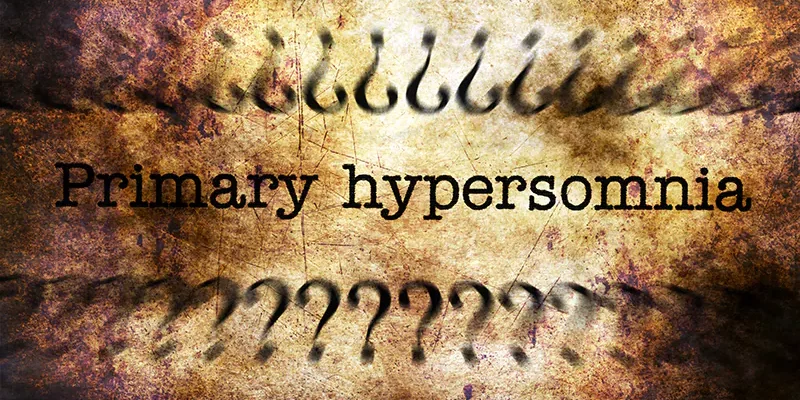Lower-sodium oxybate (Xywav, Jazz Pharmaceuticals) produces clinically meaningful improvement in idiopathic hypersomnia symptoms in adults, new research shows.
Results of the phase 3 trial that led to US Food and Drug Administration (FDA) approval of the drug last August were published in the January issue of Lancet Neurology.
An estimated 37,000 individuals in the United States have idiopathic hypersomnia, a neurologic sleep disorder characterized by chronic excessive daytime sleepiness.
Other symptoms may include severe sleep inertia or sleep drunkenness, defined as prolonged difficulty waking with frequent reentries into sleep, confusion, and irritability, as well as prolonged, nonrestorative nighttime sleep, cognitive impairment, and long and unrefreshing naps.
Novel Drug
Lower-sodium oxybate is a novel oxybate product with a unique composition of cations. It contains 92% less sodium than sodium oxybate (Xyrem).
The phase 3 study enrolled 154 adults meeting criteria for idiopathic hypersomnia from 50 sleep centers in six European countries and the United States.
Participants began lower-sodium oxybate treatment (oral solution once or twice nightly) in an open-label titration and optimization period lasting 10 to 14 weeks, followed by a 2-week, open-label, stable-dose period. The optimized dose ranged from 2.5 to 9.0 grams per night.
After the open-label periods, 115 patients were randomly allocated to either continue the optimized stable dose of lower-sodium oxybate or switch to placebo in a double-blind withdrawal phase.
During open-label titration and optimization with lower-sodium oxybate, Epworth Sleepiness Scale (ESS) scores decreased, indicating a “substantial” treatment effect, which was maintained during the stable-dose period, report Yves Dauvilliers, MD, with the Sleep and Wake Disorders Center, Department of Neurology, Gui de Chauliac Hospital, Montpellier, France, and colleagues.
During the double-blind, randomized withdrawal period, mean ESS scores increased (worsened) in the placebo group (from 5.8 to 13.3 points) but remained stable in the lower-sodium oxybate group (from 6.3 to 7.0).
The differences in ESS scores between the two groups was statistically significant (least squares mean difference, −6.5; 95% CI, −8.0 to −5.0; P < .0001).
The results also showed statistically significant and clinically meaningful differences favoring lower-sodium oxybate over placebo in the secondary endpoints of Patient Global Impression of Change (P < .0001) and the Idiopathic Hypersomnia Severity Scale (P < .0001).
Treatment-emergent adverse events (TEAEs) reported (> 10%) included nausea (22%), headache (18%), dizziness (12%), anxiety (11%), and vomiting (11%). Most TEAEs were mild or moderate. Four participants experienced nine serious TEAEs, but none were deemed to be related to the study drug. No deaths occurred during the trial.
Xywav carries a boxed warning because it is a central nervous system depressant and because there is potential for abuse and misuse. The drug is only available through a risk evaluation and mitigation strategy program.
“The results strongly suggest lower-sodium oxybate might be a useful first-line therapy, as monotherapy or in combination with alerting agents, for the treatment of idiopathic hypersomnia, a disease state for which there are no other approved treatments,” Dauvilliers and colleagues conclude.
Caveats, Cautionary Notes
The author of a linked commentary cautions that the FDA’s approval of the first and only medication to treat idiopathic hypersomnia does not necessarily mean it should be considered a first-line treatment.
Lynn Marie Trotti, MD, with the Department of Neurology and Sleep Center, Emory University School of Medicine, Atlanta, Georgia, notes that no head-to-head comparison with any other active medication, such as modafinil, was included in the study.
Another caveat is that the study cohort was not restricted to treatment-naive participants. More than half of enrolled participants were taking wake-promoting medications and using lower-sodium oxybate as an adjunct treatment, Trotti notes.
“The trial by Dauvilliers and colleagues has numerous strengths, including measurement of important clinical outcomes beyond sleepiness and individualized dosing frequency, as well as recognizing a condition that has long been poorly understood and, probably, under-recognized and under-treated,” she writes.
Nevertheless, more research is needed “to establish how lower-sodium oxybate compares with other available treatments and how best to personalize treatment for patients with idiopathic hypersomnia.”
The study was funded by Jazz Pharmaceuticals. Dauvilliers is a consultant for and has participated in advisory boards for Jazz Pharmaceuticals, UCB Pharma, Avadel, Idorsia, Takeda, Theranexus, and Bioprojet. Trotti is a member of the Board of Directors of the American Academy of Sleep Medicine (AASM).
Lancet Neurol. 2022;21:53-65, 25-26. Abstract, Editorial
For more Medscape Neurology news, join us on Facebook and Twitter.
Source: Read Full Article
